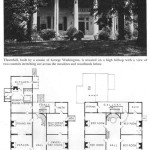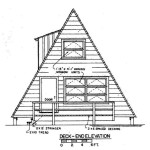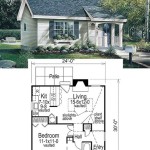A house construction plan is a comprehensive blueprint that outlines the design, materials, and construction methods for a residential building. It serves as a roadmap for all parties involved in the construction process, ensuring that the house is built according to specifications and meets the homeowner’s needs. For instance, a construction plan for a family home would specify the number of bedrooms and bathrooms, the layout of the rooms, the types of materials used for the foundation, walls, and roof, and the electrical and plumbing systems required.
House construction plans are essential for obtaining building permits and financing, as they provide detailed information about the proposed structure. They also streamline the construction process by facilitating the coordination of different trades and ensuring that all aspects of the project are completed according to plan. Moreover, they help homeowners anticipate costs and make informed decisions throughout the construction process.
In the following sections, we will delve deeper into the components of a house construction plan, its importance in ensuring a successful construction project, and the considerations involved in selecting the right plan for your dream home.
A well-crafted house construction plan is crucial for a successful building project. Here are eight key points to consider:
- Outlines design and specifications
- Guides construction process
- Ensures code compliance
- Facilitates cost estimation
- Provides basis for permits
- Streamlines material ordering
- Coordinates trades
- Protects against disputes
By addressing these essential elements, a comprehensive construction plan sets the foundation for a smooth and successful building project.
Outlines design and specifications
A comprehensive house construction plan provides a detailed outline of the design and specifications for the proposed building. This includes:
- Floor plans: These drawings show the layout of each floor of the house, including the of rooms, windows, doors, and other features.
- Elevations: These drawings show the exterior walls of the house from different sides, indicating the height, width, and architectural details of the structure.
- Sections: These drawings show vertical cross-sections of the house, illustrating the relationship between different rooms and spaces, as well as the structural elements, such as framing and insulation.
- Details: These drawings provide specific information about particular elements of the house, such as the design of the kitchen cabinets, the type of roofing material to be used, or the specifications for the electrical system.
By clearly outlining the design and specifications, the construction plan serves as a guide for all parties involved in the building process, ensuring that the house is built according to the homeowner’s vision and meets all applicable building codes and standards.
Guides construction process
A well-structured house construction plan serves as a comprehensive guide throughout the construction process, ensuring that the project is completed efficiently, safely, and according to specifications.
- Sequencing of tasks: The construction plan outlines the logical sequence of tasks involved in building the house. It identifies the dependencies between different tasks and helps contractors determine the optimal order in which to complete them. This sequencing minimizes delays and ensures that all aspects of the project are coordinated effectively.
- Material procurement: The plan provides detailed information about the materials required for construction, including the types, quantities, and specifications. This information enables contractors to procure materials in a timely manner and avoid costly delays due to material shortages or errors.
- Subcontractor coordination: The construction plan facilitates the coordination of different subcontractors involved in the project, such as framers, plumbers, electricians, and HVAC technicians. It ensures that each subcontractor has a clear understanding of their responsibilities and the sequence in which their work should be completed. This coordination minimizes conflicts and delays, keeping the project on schedule.
- Quality control: The construction plan establishes benchmarks for quality control throughout the project. It outlines the specific standards that must be met for each aspect of construction, from the foundation to the finishing touches. Regular inspections can be conducted against these standards to ensure that the house is built to the highest quality.
By providing a clear and comprehensive guide to the construction process, the house construction plan helps to avoid costly mistakes, delays, and disputes. It ensures that all parties involved are working together efficiently towards the successful completion of the project.
Ensures code compliance
A comprehensive house construction plan plays a critical role in ensuring that the building complies with all applicable building codes and standards. These codes and standards are established to ensure the safety, structural integrity, and energy efficiency of buildings. By adhering to these codes, homeowners can avoid potential legal liabilities and ensure that their house is built to a high standard of quality.
Here are some specific ways in which a construction plan helps to ensure code compliance:
- Structural requirements: Building codes specify minimum requirements for the structural elements of a house, such as the foundation, framing, and roof. The construction plan must demonstrate that the house is designed to meet or exceed these requirements, ensuring that it can withstand the expected loads and forces.
- Fire safety: Building codes include strict regulations regarding fire safety, including requirements for fire-resistant materials, smoke detectors, and emergency exits. The construction plan must incorporate these fire safety measures to ensure that the house is protected against the risk of fire.
- Energy efficiency: Building codes increasingly include energy efficiency requirements to reduce the environmental impact of buildings. The construction plan must demonstrate that the house meets or exceeds these requirements, typically through the use of energy-efficient appliances, insulation, and building materials.
- Accessibility: Building codes also include accessibility requirements to ensure that buildings are accessible to people with disabilities. The construction plan must incorporate these accessibility features, such as ramps, wider doorways, and accessible bathrooms.
By ensuring compliance with building codes and standards, a well-crafted construction plan helps to protect the safety, health, and well-being of the occupants, while also safeguarding the homeowner from potential legal issues and ensuring the long-term value of their investment.
Building codes are subject to change over time, and local jurisdictions may have specific amendments or additional requirements. It is important to work with a qualified architect or engineer who is familiar with the applicable building codes and can ensure that the construction plan meets all relevant requirements.
Facilitates cost estimation
A well-structured house construction plan plays a critical role in facilitating accurate cost estimation for the project. By providing a detailed outline of the materials, labor, and other resources required, the construction plan enables homeowners and contractors to determine the total cost of the project with greater precision.
Here are some specific ways in which a construction plan helps to facilitate cost estimation:
- Quantifying materials: The construction plan provides a detailed list of all the materials required for construction, including the types, quantities, and specifications. This information allows contractors to obtain accurate quotes from suppliers and estimate the total cost of materials.
- Estimating labor costs: The construction plan outlines the sequence of tasks involved in building the house, along with the estimated labor hours required for each task. This information enables contractors to determine the total labor costs for the project, taking into account factors such as the complexity of the design, the local labor market, and the experience level of the construction crew.
- Identifying potential cost-saving opportunities: The construction plan can help homeowners and contractors identify potential cost-saving opportunities. For example, the plan may suggest using alternative materials or construction methods that are more cost-effective while still meeting the desired quality standards.
- Managing change orders: During the construction process, unforeseen circumstances may arise that require changes to the original plan. The construction plan provides a framework for managing change orders, ensuring that the cost implications of any changes are carefully evaluated and documented.
By providing a comprehensive overview of the project scope, the construction plan enables homeowners and contractors to develop a realistic and accurate cost estimate. This information is essential for making informed decisions throughout the construction process and avoiding costly surprises.
It is important to note that cost estimation is not an exact science, and there may be some variance between the estimated cost and the actual final cost of the project. However, a well-prepared construction plan can significantly reduce the risk of significant cost overruns and ensure that the project is completed within the desired budget.
Provides basis for permits
A comprehensive house construction plan provides a solid basis for obtaining building permits from local authorities. Building permits are essential legal documents that authorize the construction or alteration of a building and ensure that the project complies with all applicable building codes and regulations.
Here are some specific ways in which a construction plan helps to facilitate the permit process:
- Demonstrates compliance: The construction plan provides detailed documentation that demonstrates how the proposed building will comply with all relevant building codes and standards. This includes structural requirements, fire safety measures, energy efficiency standards, and accessibility features.
- Identifies responsible parties: The construction plan clearly identifies the licensed architect or engineer who designed the building, as well as the contractor who will be responsible for constructing it. This information is essential for the permitting authority to assess the qualifications of the individuals involved in the project.
- Streamlines the review process: A well-organized and complete construction plan can significantly streamline the review process for the permitting authority. By providing all the necessary information upfront, the plan helps to avoid delays and ensures that the permit is issued in a timely manner.
- Reduces the risk of permit denial: A comprehensive construction plan reduces the risk of permit denial by addressing potential issues early in the design process. By proactively demonstrating compliance with building codes and regulations, the plan helps to avoid costly delays or the need for major revisions to the design.
In addition to facilitating the initial permit application, a construction plan can also serve as a valuable reference document throughout the construction process. Inspectors may use the plan to verify that the building is being constructed according to the approved design and that all applicable codes and standards are being met.
It is important to note that building permit requirements can vary depending on the local jurisdiction. Homeowners and contractors are advised to consult with the local building department to determine the specific requirements for their project and to ensure that the construction plan meets all applicable regulations.
Streamlines material ordering
A well-structured house construction plan plays a crucial role in streamlining the material ordering process, ensuring that the right materials are ordered in the correct quantities and delivered to the construction site on time. This can significantly reduce the risk of delays, material shortages, and costly errors.
Here are some specific ways in which a construction plan helps to streamline material ordering:
- Detailed material list: The construction plan provides a comprehensive list of all the materials required for the project, including the types, quantities, and specifications. This detailed list enables contractors to accurately order the materials they need, avoiding the risk of over-ordering or under-ordering.
- Sequencing of materials: The construction plan outlines the sequence in which different materials will be needed on the construction site. This information helps contractors to coordinate material deliveries with the progress of construction, ensuring that materials are available when needed and stored properly to avoid damage or loss.
- Supplier coordination: The construction plan can help contractors to identify and coordinate with reliable suppliers for different materials. By establishing relationships with reputable suppliers, contractors can secure competitive pricing, ensure timely delivery, and minimize the risk of material shortages.
- Centralized communication: The construction plan provides a centralized document that all parties involved in the project can refer to for material-related information. This helps to avoid miscommunications and ensures that everyone is working with the same up-to-date information.
In addition to these benefits, a well-organized construction plan can also facilitate the use of project management software or apps to track material orders, deliveries, and inventory. This can further streamline the material ordering process and provide real-time visibility into the availability and status of materials.
Coordinates trades
A well-structured house construction plan plays a vital role in coordinating the work of different trades involved in the construction process. By outlining the sequence of tasks and responsibilities for each trade, the construction plan ensures that all aspects of the project are completed efficiently and according to specifications.
- Framing:
The framing crew is responsible for constructing the structural framework of the house, including the foundation, walls, and roof. They work closely with the architect or engineer to ensure that the structure is designed to meet all applicable building codes and standards.
- Plumbing:
The plumbing crew is responsible for installing all the water supply and drainage systems in the house, including pipes, fixtures, and appliances. They work closely with the framing crew to ensure that the plumbing systems are properly integrated into the structure of the house.
- Electrical:
The electrical crew is responsible for installing all the electrical wiring and components in the house, including outlets, switches, and lighting fixtures. They work closely with the framing crew to ensure that the electrical systems are properly integrated into the structure of the house.
- HVAC:
The HVAC crew is responsible for installing the heating, ventilation, and air conditioning systems in the house. They work closely with the framing crew to ensure that the HVAC systems are properly integrated into the structure of the house and that they meet all applicable building codes and standards.
In addition to these four major trades, there may be other specialized trades involved in the construction of a house, depending on the complexity of the project. These may include trades such as roofing, siding, drywall, painting, and landscaping. The construction plan coordinates the work of all these trades, ensuring that they work together efficiently and that the house is completed on time and within budget.
Protects against disputes
A well-structured house construction plan can help to protect against disputes between the homeowner, contractor, and other parties involved in the project. By clearly outlining the scope of work, responsibilities, and expectations, the construction plan provides a common reference point for all parties and reduces the likelihood of misunderstandings or disagreements.
- Defines the scope of work:
The construction plan clearly defines the scope of work to be performed by the contractor, including the materials to be used, the construction methods to be employed, and the timeline for completion. This helps to avoid disputes over what work is included in the contract and what work is not.
- Establishes responsibilities:
The construction plan assigns responsibilities to each party involved in the project, including the homeowner, contractor, architect, and subcontractors. This helps to avoid confusion over who is responsible for what tasks and who is liable for any delays or defects.
- Sets expectations:
The construction plan sets clear expectations for the quality of workmanship and the materials to be used. This helps to avoid disputes over whether the finished product meets the agreed-upon standards.
- Provides a basis for resolving disputes:
If a dispute does arise, the construction plan can provide a basis for resolving the dispute fairly and equitably. By referring to the agreed-upon plans and specifications, the parties can often reach a mutually acceptable solution.
Overall, a well-structured house construction plan can help to protect against disputes by providing a clear framework for the project and by setting clear expectations for all parties involved.










Related Posts








